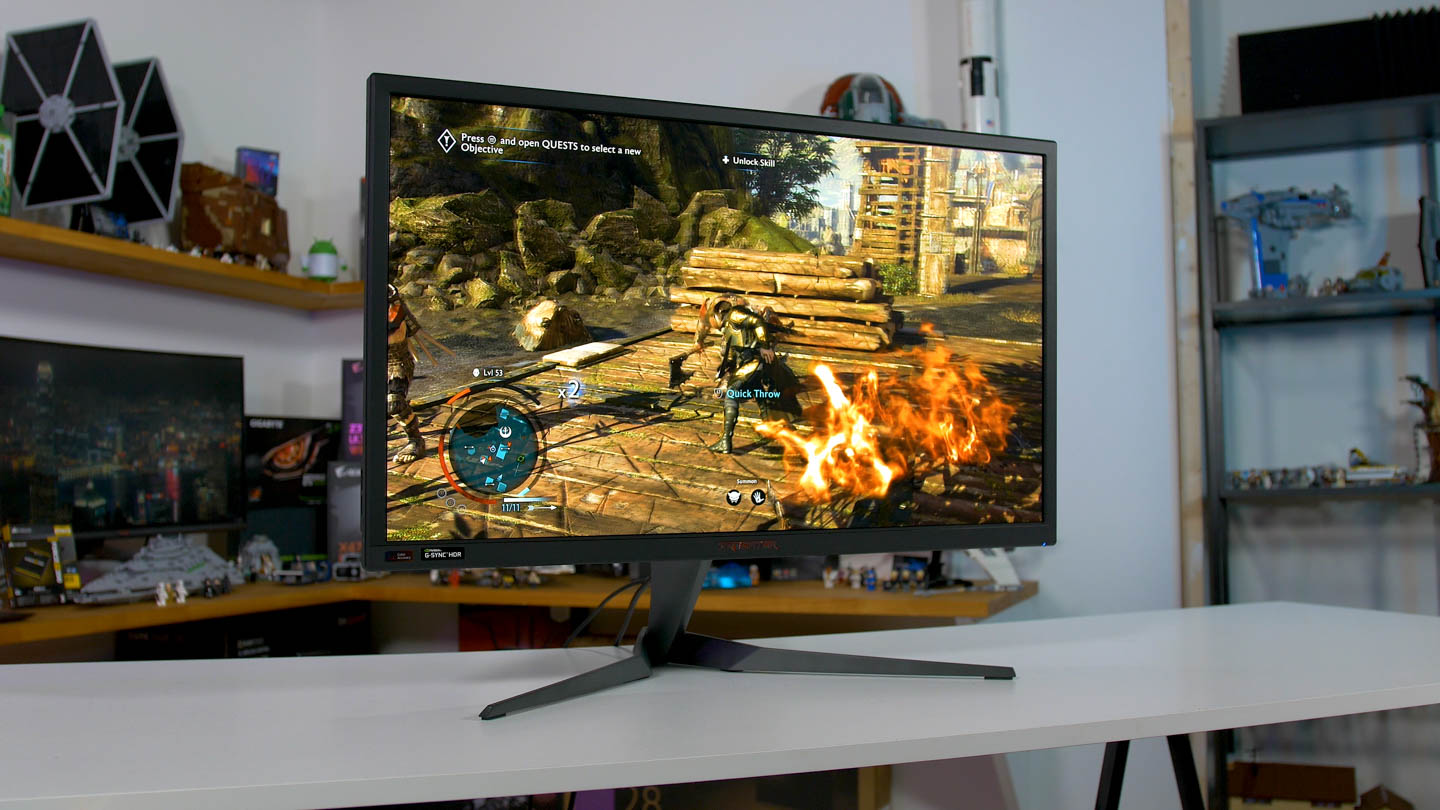HDR Performance
Moving into performance and we'll start with HDR because it's the key feature of the Predator X27. Nothing here is really all that different to the PG27UQ, so if you're interested in a more detailed set of thoughts on how this monitor fares in terms of HDR, I'd suggest going back and reading the HDR section of that review. But I will summarize the key points here.
The Predator X27 ticks basically every box in my HDR monitor checklist, including great brightness support of 600 nits sustained and over 1000 nits peak. Brightness accuracy is decent, so when content requests say 700 nits be displayed, the X27 gets pretty close to that mark with its default settings. I also achieved around 1100 nits maximum from a 10% window or smaller, which is great.

Contrast is excellent thanks to a full array local dimming backlight with 384 zones, which is fast and produces no visible afterglow after bright objects disappear from view. Each zone is small enough that you won't notice glow around the edges of bright objects in typical movies or games, it's only in desktop usage that you might run into those artefacts. With local dimming enabled, the contrast ratio is as high as 52,000:1 though that varies depending on the brightness of the content. Maximum sustained contrast ratio is around 30,600:1 in the HDR mode, with black levels significantly lower than any other LCD monitor without local dimming.
Acer provides several backlight speeds but for most users I'd recommend leaving it on the default 'gaming' mode, which is the fastest. There is a reference white slider but for some reason it's disabled, not sure why that's the case when the same feature is accessible with the Asus monitor. That said, brightness accuracy is good so you wouldn't have needed to adjust the reference white anyway, while any SDR brightness adjustments can be made in Windows 10's now functional HDR and WCG settings, which allows up to 500 nits of brightness for SDR content, well above what most people would actually use.
As for wide gamut support, again the X27 ticks all the right boxes here, providing 93% DCI-P3 coverage, 99% Adobe RGB coverage, and 150% sRGB coverage. The panel is 8-bit+FRC, not that you'd be able to notice the difference compared to a true 10-bit panel in almost every situation, but of course it supports 10-bit color processing. All of this means you're getting a much wider array of colors in the HDR mode.
Again, as far as monitors go, the X27 provides the best HDR experience you can get right now and games that support HDR well really do look significantly better in the HDR mode on this monitor, with brighter highlights, a wider range of colors, and spectacular contrast. In fact this snippet from my PG27UQ review sums it up pretty well:
"In games like Far Cry 5 that support HDR really well, you're not only getting a more vibrant image as the panel can actually display more colors, but there's so much more detail visible particularly in high-contrast scenes. Take an outdoor sunny scene with heavy shadowing. This monitor has the ability to dazzle you with a sun burning at 1000 nits, while simultaneously providing plenty of visible detail in a dark shadowy area. Neither of these elements are blown out, because the monitor's dynamic range far exceeds a regular SDR display, and it more closely simulates how the scene would look in real life."
So yeah, HDR on the Acer Predator X27 is a lot better than any boring old regular SDR display. Whether that's worth $2000 is another question which I'll touch on at the end.
Of course, like with the PG27UQ there is the issue of refresh rate and chroma subsampling. Again I go into a lot more detail in my PG27UQ review, but the basic issue boils down to DisplayPort bandwidth: there's simply not enough for HDR or SDR content at 4K 144 Hz. Instead, full 4:4:4 RGB is only possible at 4K 120 Hz in the SDR mode, and 4K 98 Hz in the HDR mode.
If you want to run at higher than those refresh rates, such as at the monitor's maximum 144 Hz refresh rate, you'll have to put up with 4:2:2 chroma subsampling, which reduces the chroma resolution and can introduce artefacts in some situations. Chroma subsampling is extremely hard to spot in video content and in games, but it's noticeable in desktop apps with artefacts around solid edges and text.
I'd still class the issue as minor, but it's disappointing DisplayPort is limiting these displays from reaching their full potential, hopefully that's resolved with future tech. I'd advise people using the display in the desktop SDR mode to cap the monitor to 120 Hz or even 98 Hz, and for HDR gaming, run at 98 Hz unless you have powerful enough hardware to exceed 100 FPS at 4K.



